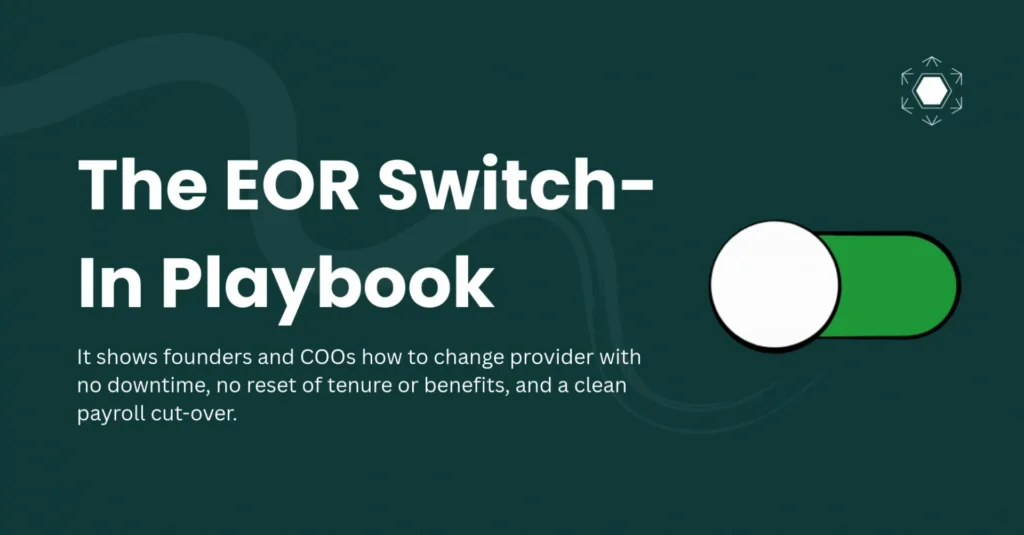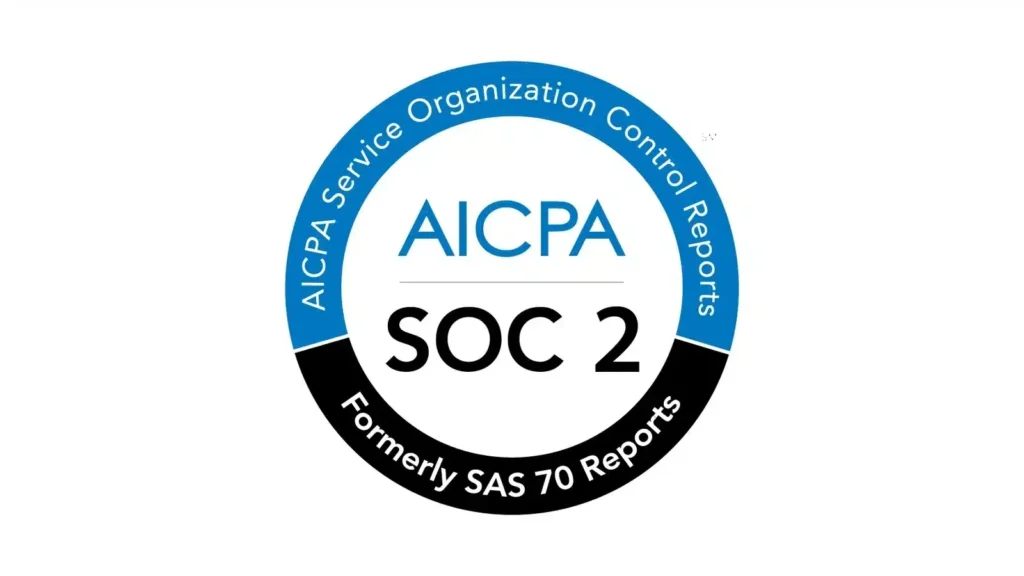If you’re reading this, something’s already not working. Response times slip. Payslips arrive late. Simple contract changes take weeks. You know it’s time to change EOR provider—but the fear is real: payroll gaps, messy contracts, anxious employees, and the kind of administrative drag that stalls growth. The truth is, a switch-in doesn’t have to be dramatic. Done well, it’s a tidy, four-week project with a clear critical path, no downtime, and zero surprises for your team. This playbook shows founders and COOs how to make the move with confidence.
Answer in one line: you can switch employer of record providers without a break in service, without resetting tenure or benefits, and without missing a payroll, provided you anchor to the right dates, run a dry-run payroll, and communicate early and clearly.
What actually changes—and what doesn’t—when you switch
A switch doesn’t rewrite your business. Your people continue doing their jobs, on the same salaries and benefits, serving the same customers. What changes is the underlying employer of record, who holds the employment contract locally, who runs payroll and benefits, and who provides day-to-day HR administration.
The legal employer changes hands; the employment relationship should not. Tenure carries across; compensation and benefits are matched; accrued leave and other balances are recognised. The best test of a well-run switch is that most employees barely notice the change beyond an updated payslip portal and a new support contact.
The critical path: dates, documents, and payroll cut-over
Every clean switch is built on three anchors: a firm go-live date, a complete document pack, and a flawless payroll cut-over. Start by fixing the cut-over payroll cycle—usually the first of the next month—and work backwards. Governance comes first: create a small, named squad (COO, CFO/Payroll, HR lead, legal) and a single, access-controlled workspace for everything. Get mutual NDAs in place, then open KYC and the service agreement immediately; nothing else moves without them.
The document pack is where momentum is won. Assemble the employee roster and current contracts, confirm compensation and allowances, and gather benefits schedules so parity can be mapped. Your legal partner—Founders Law, in our world—reviews the new contract pack to ensure enforceable IP assignment, confidentiality, probation, and notice that fit local practice. In parallel, payroll calendars and cut-offs are agreed country by country, inputs are configured, and a short dry run is executed to flush out any variances before day one. On the eve of cut-over you run a final readiness check; on day one you execute, issue payslips, and confirm outcomes in writing.
Contracts, IP, and benefits continuity—keeping employees whole
Continuity is the promise you make to your team—and then prove. The new contracts should reflect local law and the spirit of the existing terms: the same salary, the same allowances, the same benefits eligibility, and unequivocal confirmation that service is continuous. Where jurisdictions use transfer mechanisms, you prepare acknowledgement letters so employees know exactly what’s changing and what isn’t.
IP and confidentiality deserve special attention; it’s the moment to improve your protection without eroding trust. Use clear, locally enforceable clauses that match role realities, not vague global boilerplate. Benefits continuity is equally practical: map insurer rules, recognise any waiting periods, and confirm enrolments before you announce the switch so there is no gap in cover. When the paperwork is solid, the employee experience is calm.
Communications plan—what leaders say, what managers do
People don’t worry because things are changing; they worry because they don’t know what will change. The communication plan is short and human. The founder or COO announces the switch in simple language, explains why it matters (better service, faster response, cleaner payroll), and states plainly that compensation, benefits, and tenure will not change. You introduce the new support contacts and share the key date for the first payslip under the new provider.
Managers then take over. They get talking points that mirror the announcement and answer the questions employees will actually ask: Will my benefits card still work? Where do I download payslips? Who do I contact if something looks off? The goal is not a communications campaign; it’s clarity that lands in one read and removes anxiety.
Risk hotspots to neutralise early (KYC, visas, probation, accruals)
The same handful of issues derail most switches, and none of them are mysterious. KYC can drag if it starts late; run it first and give the provider a single point of contact. Visa-dependent employees need counsel involved from day one so employer changes don’t accidentally affect status. Probation and notice language from legacy contracts can conflict with local practice; align your effective dates carefully so you don’t create an accidental termination. Benefits can have insurer-specific waiting periods; if you don’t pre-approve continuity, you risk gaps. Payroll is unforgiving; always perform a dry-run so variances are fixed before payday. Finally, treat data like the regulated asset it is: encrypt transfers, restrict access to the core squad, and obtain written confirmation of data deletion from the previous provider at the end.
Case medley: why teams switched and how the handover ran
Across switch-ins we’ve managed, the reasons are familiar: missed payroll SLAs, slow contract changes, weak local support, or simply outgrowing a provider’s model. The outcomes are what matter.
Netcracker moved from Velocity Global and scaled to over a hundred hires across a wide spread of countries, standardising quality without pausing their growth. Human Security and Exterro both switched from Papaya to stabilise payroll and tighten compliance, with clean cut-overs that didn’t interrupt a single payslip. ShippyPro left Deel to move faster in France; Fiska did the same with Safeguard Global to unlock early US hiring. We’ve also welcomed teams from Remote, including Bluecat and Founders Factory, where the promise was simple: a faster response, tighter handover, and a payroll calendar you can set your month-end to. The common thread is not the brand they left; it’s the discipline of a project that finishes before anyone outside the core squad has time to worry.
FAQs
Can employees transfer without a break in service?
Yes. With a properly structured switch, employment is continuous. Service time, compensation, and benefits eligibility carry across; what changes is the legal employer on the contract and who administers payroll and HR.
Will benefits or tenure reset?
No. Benefits are mapped and re-enrolled to avoid gaps, and tenure is preserved. Where insurers impose waiting periods, we arrange continuity so there’s no break in cover.
How long does a clean switch take?
Four weeks is a sensible default: one for governance and KYC, one for document and contract readiness, one for payroll configuration and dry-run, and one for communications and cut-over. More complex visa or works-council situations can extend that timeline, but the critical path is the same.
Next steps
If you want a guided handover, we’ll run the project end-to-end so your team doesn’t miss a beat. Book a 30-min switch-in review and we’ll map dates, and documents under the new provider.
Helpful links:
EOR Services • Customer Experience • Case Studies • Founders Law




